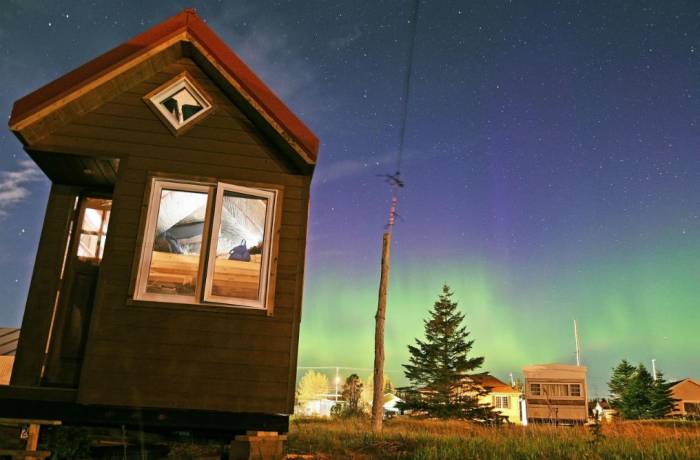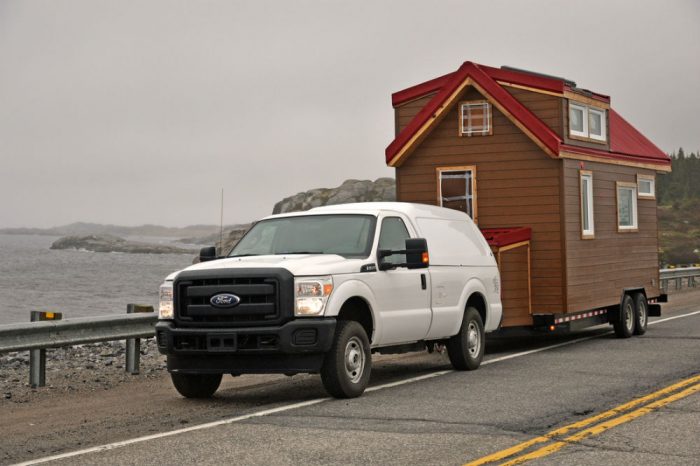A new take on marine research? An eco-friendly tiny home will double as a base for two traveling scientists this summer.

Tracking migration patterns and behaviors of whales and dolphins along Canada’s Gulf of St. Lawrence, two marine researchers devised an ingenious way to mobilize their base of operations while raising awareness for everyday green living: A tiny-home science station.
From June to September, wildlife biologists Katy Gavrilchuk and David Gaspard – both Montreal-based biologists – will be living in, working out of, and giving talks from their Big Whale Tiny House over the course of a 670-mile journey from Montreal to the Gulf of St. Lawrence.
The 160-square-foot, 13-foot-tall tow-behind home – which the two built themselves with the help of family and friends beginning last October – will hold all research equipment and provide a living space for the researchers.

Tiny Home Trend










